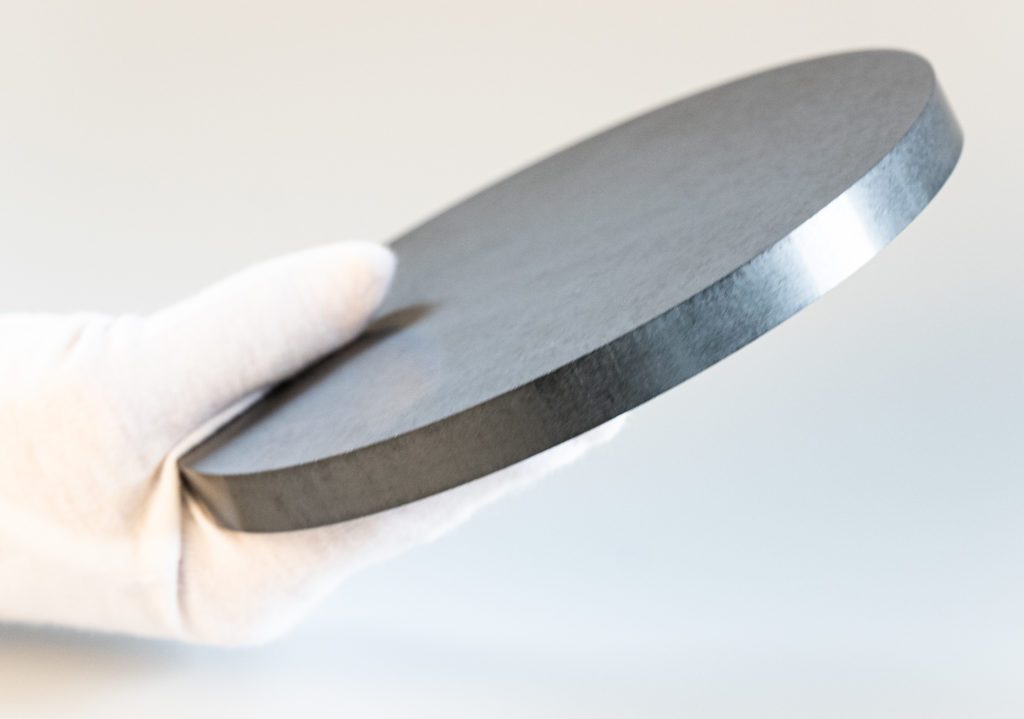YOUR EXPERT FOR SILICIUMCARBID
EEMCO HIGHLIGHTS
Own crystal growth equipment
Own raw material supply chain
Own dedicated process development for high-quality 6″ and 8″ seeds
Dedicated material adoption for customer-specific thin wafering processes (< 100 µm)
Close cooperation with different research partners in both academia and industry
Digitalization of crystal growth processes and full access to machine, process and product data
100 % European green crystal growth production sites
12 years of R&D experience
more than 30 patents over the last 2 years
WHO ARE WE
EBNER EUROPEAN MONO CRYSTAL OPERATION, also known as EEMCO, is a startup founded at the end of 2020 that is majority-owned by EBNER Beteiligungsgesellschaft
mbH. The company takes advantage of its 12 years of R&D experience in the design
and manufacture of crystal growth equipment to develop dedicated furnaces for the 4H SiC single crystal growth process, taking the next step in the manufacture of 8” 4H SiC single crystals. At the company’s works in Leonding, Austria, EEMCO´s team of international experts is working on the growth of SiC single crystals for the semiconductor industry. These crystals are used in high power applications, particularly those encountered in the automotive, industrial and renewable energy sectors. EEMCO operates 15 research furnaces in which SiC single crystals are grown using
a PVT (Physical Vapor Transport) process, where a single crystal is grown in a SiC vapor phase. Our goals are to manufacture strategic, high-tech products as
the first independent company in Europe to produce these types of SiC crystals, and to offer a high-quality alternative to a dependency on suppliers in the USA or China. As a sustainable and energy-saving product, SiC also makes a significant contribution to the reduction of CO2 in a wide range of markets and consumer end products.

TECHNOLOGY
We use uniquely-developed powders and granulates at EEMCO.

PRODUCT
EEMCO specializes in the manufacture of high-quality
6” and 8” pucks, using proprietary furnaces and process
technology. Compared to 6” wafers, 8” ingots and wafers offer a significant increase in capacity: they provide almost twice the usable area for manufacturing integrated circuits, delivering 1.8 – 1.9 times as many chips. The
ability to supply high-quality 6” and 8” single crystal ingots that fulfill requirements for thin wafering technologies allows wafer thickness to be reduced by at least a factor of three.
Over the last two years, we have applied for over 30 patents related to SiC crystal growth equipment and processes. Our corporate strategy has been to grow 6”, followed later by 8”, SiC single crystals that can be used to manufacture and supply ingots throughout the world – though our primary focus is on European customers.
APPLICATIONS

AUTOMOTIVE

HIGH POWER ELECTRONICS

RENEWABLE ENERGY
The demand for electric drives in automobiles has been increasing rapidly, and with a market share of more than 60 % they are by far the most significant factor in the market for high power electronic devices. In turn, this has created an increasing demand for highly-efficient power semiconductors for use in electric/hybrid vehicles (EV/HEV). This application immediately suggests the use of SiC-based power semiconductors, as they have clear advantages over conventional Si-based components. The higher efficiency and power density provided by SiC lead to increased ranges, smaller system dimensions and faster charging times. Typical applications include highly-efficient inverters, on-board charging electronics, boosters and DC/DC converters. Among the essential criteria for the economical use of SiC single crystals is the lowest possible defect density in a single crystal, paired with the largest possible crystal wafer (a 6” wafer is now standard, with 8” wafers soon to be introduced). This requires the mastery of complex crystal growing technology, such as that provided by EEMCO.
A wide range of industrial applications are driven by the need for auxiliary power supplies. These applications typically include motor drives, inverters and industrial manufacturing equipment (including robotics). With its unique properties, silicon carbide strongly supports improvement in the energy efficiency, reliability and performance of these systems. Typical devices using SiC-based technology range from Schottky diodes (also called Schottky barrier diodes, or SBDs) to junction-gate FETs (or JFETs) and MOSFETs. In fact, SiC SBDs are widely used in IGBT power modules and power factor correction (PFC) circuits. SiC does not just increase efficiency and reduce cooling requirements in these applications. It also simplifies device design, in that it reduces the amount of passive components and enables simpler designs – without sacrificing performance. These characteristics are also very useful in the IT industry, particularly in data centers.
Solar power, wind power and renewable energy storage are market segments that display remarkable growth. The renewable energy sector is thus one that is effectively and efficiently balancing supply and demand. While renewable energy has been a favored application for SiC products for many years, the current climate and energy crises have increased the demand for alternative energy sources even more. Common applications again involve high-efficiency electronic power devices like inverters and boosters (power converters), as well as essential components for power conversion and energy storage systems. The typical charging losses for such devices are range between 6 and 9 %, figures that can be reduced dramatically by applying SiC technology. SiC-based device technology also reduces the need for complex circuit designs, requiring fewer overall components.
